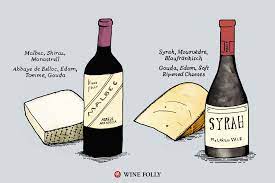Contents
Understanding Flavor Profiles
To create a truly memorable pairing, it’s crucial to understand the basic principles of flavor pairing. Cheese and wine share common flavor elements such as sweetness, acidity, bitterness, and richness. When these elements are balanced or complemented, they create a synergy that enhances the overall taste experience. For instance, a creamy and buttery cheese can be beautifully complemented by a crisp and acidic white wine.
Factors to Consider
Several factors should be taken into account when pairing cheese and wine. These include the intensity of flavors, texture, and aging of the cheese, as well as the body, acidity, and tannins of the wine. 강남 사라있네 하이퍼블릭 The goal is to achieve a harmonious balance where neither the cheese nor the wine overpowers the other. By considering these factors, you can create a memorable pairing that brings out the best in both.
Cheese and Wine Pairing Recommendations
1. Soft Cheeses
Brie
Brie, with its velvety texture and delicate flavors, pairs exceptionally well with Champagne or a sparkling wine. The effervescence and acidity of the wine cut through the richness of the cheese, creating a delightful contrast.
Camembert
Similar to Brie, Camembert’s creamy texture and earthy flavors are complemented by a crisp Chardonnay or a light-bodied Pinot Noir. The subtle fruitiness of these wines enhances the delicate flavors of the cheese without overpowering them.
2. Semi-Soft Cheeses
Gouda
Gouda’s nutty and slightly sweet taste makes it a versatile choice for pairing. For a classic combination, try it with a medium-bodied Merlot or a fruity Zinfandel. The smooth tannins of these wines enhance the cheese’s flavors, creating a well-rounded experience.
Fontina
Fontina, known for its mild and buttery flavor, pairs beautifully with a Sauvignon Blanc or a dry Riesling. The crispness and acidity of these wines provide a refreshing contrast to the richness of the cheese.
3. Hard Cheeses
Cheddar
The bold and sharp flavors of Cheddar call for a wine that can hold its ground. Opt for a full-bodied Cabernet Sauvignon or a robust Malbec. The wine’s tannins and fruit-forward character stand up to the cheese’s intensity, resulting in a harmonious pairing.
Parmesan
Parmesan, with its salty and savory notes, pairs wonderfully with a complex and structured wine such as a Barolo or a Syrah. These wines have the depth and character to complement the cheese’s distinct flavors, creating a memorable combination.
Exploring Regional Pairings
To truly appreciate the art of cheese and wine pairing, it’s worth exploring regional combinations that have stood the test of time. Here are a few classic pairings from renowned cheese and wine regions:
French Pairings
Roquefort and Sauternes
The rich and tangy Roquefort cheese finds its perfect match in the sweet and luscious Sauternes wine. The contrasting flavors create a remarkable taste experience that is quintessentially French.
Italian Pairings
Mozzarella di Bufala and Chianti
The creamy and mild Mozzarella di Bufala is beautifully complemented by the fruity and medium-bodied Chianti wine. Together, they represent the epitome of Italian gastronomy.
Final Thoughts
In conclusion, the art of pairing cheese and wine is a delightful journey that combines flavors, textures, and regional traditions. By understanding the basics of flavor pairing and considering the characteristics of both the cheese and wine, you can create memorable combinations that will tantalize your taste buds. Whether you’re hosting a dinner party or simply indulging in a quiet evening at home, the right cheese and wine pairing can elevate your culinary experience to new heights. So, next time you’re at a gourmet shop or a winery, don’t hesitate to explore the world of cheese and wine and embark on a delicious adventure that will leave your palate craving for more.
